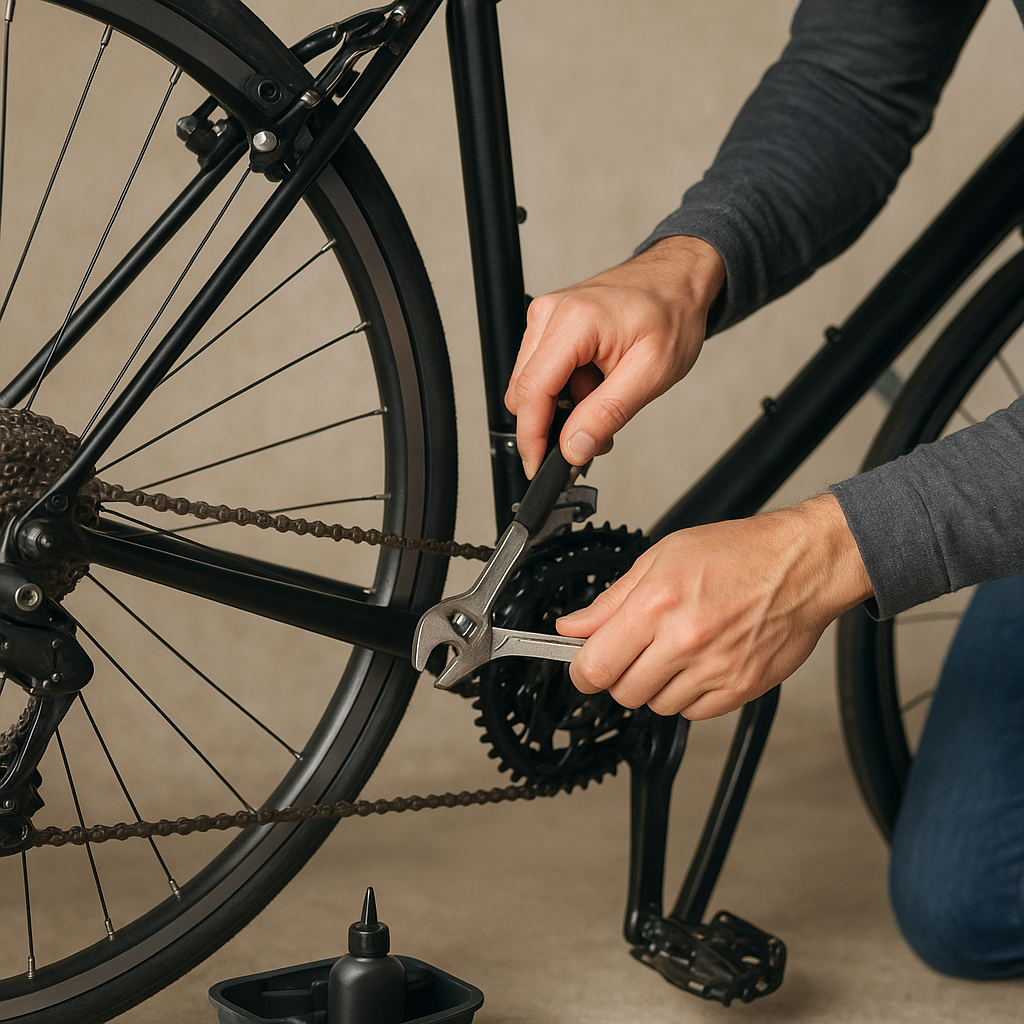
Maintaining your bicycle’s bottom bracket is crucial for ensuring a smooth and efficient ride. This article will guide you through the process of checking and replacing your bottom bracket, covering everything from identifying issues to selecting the right tools and performing the replacement.
Understanding the Bottom Bracket
The bottom bracket is a critical component of your bicycle’s drivetrain. It connects the crankset to the bicycle and allows the crank arms to rotate smoothly. The bottom bracket consists of a spindle, which the crank arms attach to, and bearings that enable the spindle to rotate. Over time, these bearings can wear out, leading to a rough or noisy ride.
Types of Bottom Brackets
There are several types of bottom brackets, each with its own design and installation method. The most common types include:
- Threaded Bottom Brackets: These are screwed into the bottom bracket shell of the frame. They are easy to install and remove, making them a popular choice for many cyclists.
- Press-Fit Bottom Brackets: These are pressed into the bottom bracket shell without threads. They require special tools for installation and removal but offer a wider range of compatibility with different frame designs.
- External Bottom Brackets: These have bearings located outside the bottom bracket shell, providing better support for the crankset. They are commonly used in high-performance bicycles.
Identifying Bottom Bracket Issues
Before replacing your bottom bracket, it’s essential to identify whether it needs replacement. Common signs of a worn-out bottom bracket include:
- Noise: Clicking, creaking, or grinding noises when pedaling can indicate worn bearings or loose components.
- Play: If you feel lateral movement in the crank arms, it may suggest that the bottom bracket bearings are worn or the bottom bracket is not properly secured.
- Resistance: Increased resistance when pedaling can be a sign of bearing wear or contamination.
Tools and Materials Needed
To check and replace your bottom bracket, you’ll need the following tools and materials:
- Bottom bracket tool (specific to your bottom bracket type)
- Crank puller
- Allen wrenches
- Grease
- Torque wrench
- Replacement bottom bracket
Checking Your Bottom Bracket
Follow these steps to check the condition of your bottom bracket:
Step 1: Remove the Crankset
Use an Allen wrench to remove the crank bolts. If your crankset uses a self-extracting system, the crank arms will come off as you unscrew the bolts. If not, use a crank puller to remove the crank arms.
Step 2: Inspect the Bottom Bracket
With the crankset removed, inspect the bottom bracket for any signs of wear or damage. Check for play by wiggling the spindle. Rotate the spindle to feel for any roughness or resistance. If you notice any issues, it’s time to replace the bottom bracket.
Replacing Your Bottom Bracket
Once you’ve determined that your bottom bracket needs replacement, follow these steps:
Step 1: Remove the Old Bottom Bracket
Use the appropriate bottom bracket tool to unscrew and remove the old bottom bracket from the frame. For threaded bottom brackets, turn the tool counterclockwise to remove the drive-side cup and clockwise for the non-drive side. For press-fit bottom brackets, use a bearing press tool to carefully remove the bearings.
Step 2: Clean the Bottom Bracket Shell
Thoroughly clean the bottom bracket shell to remove any dirt, grease, or debris. This ensures a smooth installation and prevents contamination of the new bottom bracket.
Step 3: Install the New Bottom Bracket
Apply a thin layer of grease to the threads or surfaces of the new bottom bracket. For threaded bottom brackets, screw the drive-side cup into the frame first, followed by the non-drive side. Use a torque wrench to tighten the cups to the manufacturer’s specifications. For press-fit bottom brackets, use a bearing press tool to carefully press the new bearings into the frame.
Step 4: Reinstall the Crankset
Reinstall the crank arms onto the spindle and secure them with the crank bolts. Use a torque wrench to tighten the bolts to the manufacturer’s specifications. Ensure that the crank arms rotate smoothly and without any play.
Maintaining Your Bottom Bracket
Regular maintenance can extend the life of your bottom bracket and ensure a smooth ride. Here are some tips for maintaining your bottom bracket:
- Keep it Clean: Regularly clean your bottom bracket area to prevent dirt and debris from contaminating the bearings.
- Check for Play: Periodically check for any lateral movement in the crank arms and address any issues promptly.
- Lubricate: Apply grease to the bottom bracket threads or surfaces during installation to prevent corrosion and ensure smooth operation.
- Inspect Regularly: Regularly inspect your bottom bracket for signs of wear or damage and replace it as needed.
Conclusion
Checking and replacing your bottom bracket is a crucial aspect of bicycle maintenance that can significantly impact your riding experience. By understanding the different types of bottom brackets, identifying issues, and following the proper steps for replacement, you can ensure that your bicycle remains in top condition. Regular maintenance and inspections will help you catch any problems early and keep your bottom bracket functioning smoothly for years to come.

